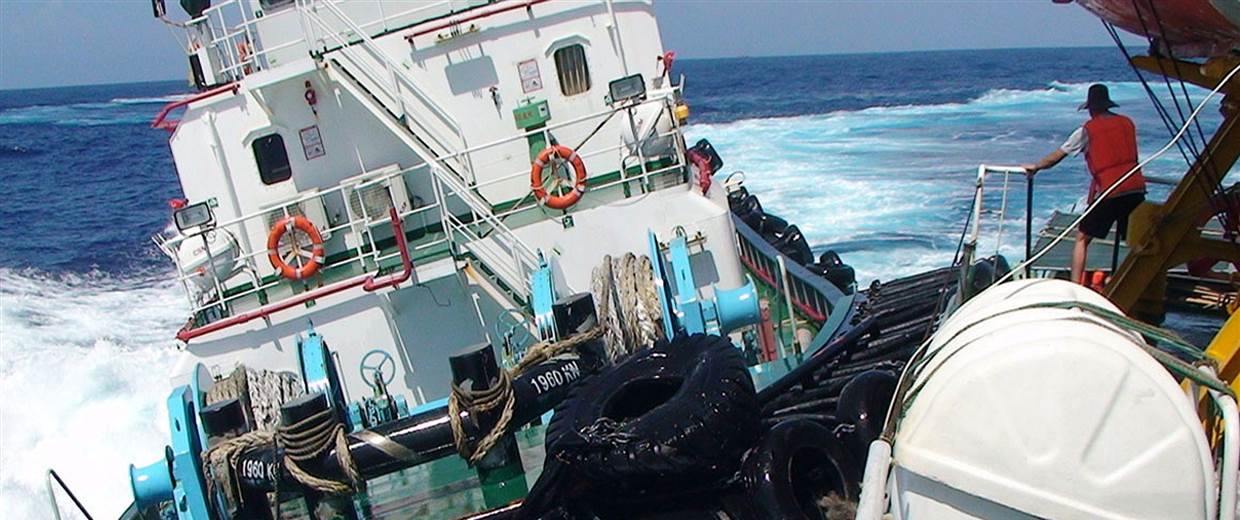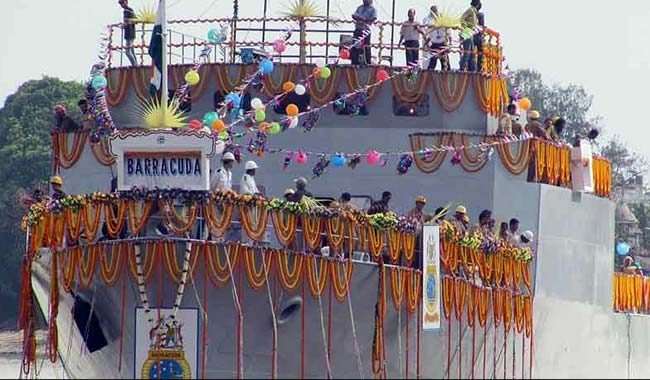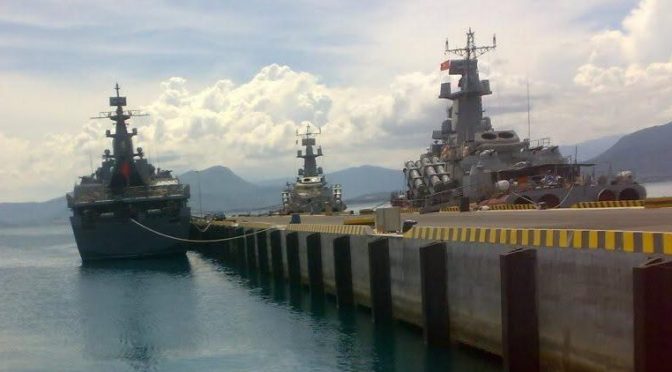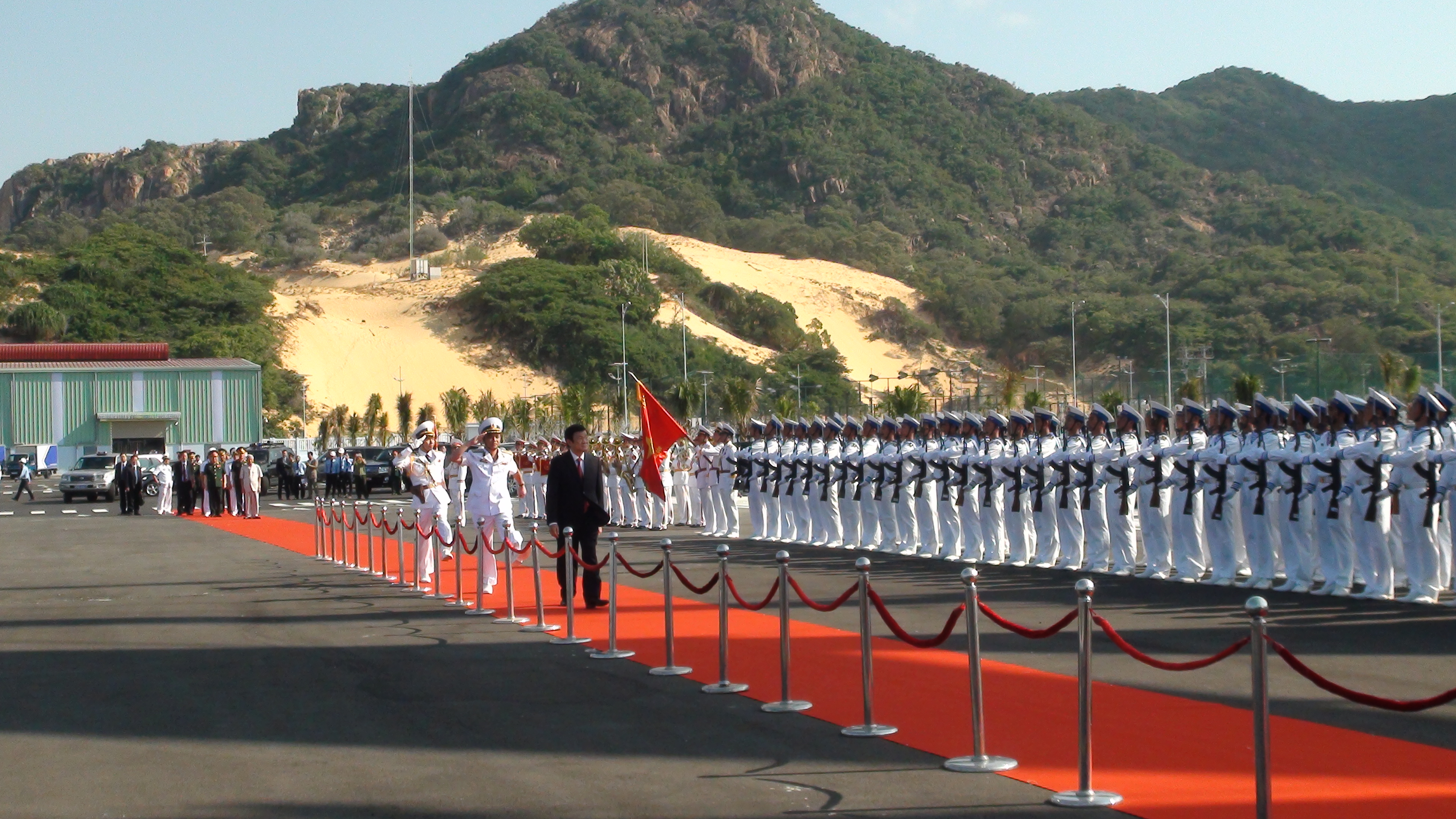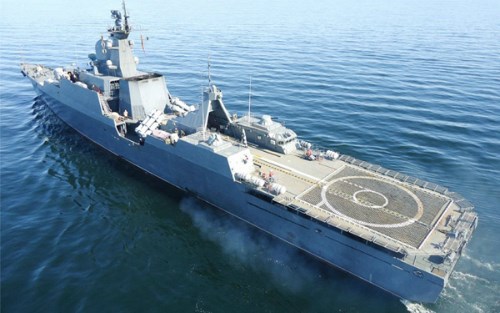By Devin Thorne and Ben Spevack
Introduction
On a late June morning in 2014, Vietnamese fisheries inspection vessel KN 951 approached HYSY 981 (海洋石油981), a Chinese-owned mobile oil platform operating within Vietnam’s claimed exclusive economic zone (EEZ). Three Chinese state-owned commercial vessels retaliated by spraying, ramming, and chasing KN 951 for approximately 11.5 nautical miles, ultimately doing substantial damage to the Vietnamese vessel’s hull. During the pursuit, these three Chinese tugboats displayed a considerable degree of tactical coordination: there is video footage showing that two boats worked in tandem to “T-bone” KN 951 while a third tug positioned itself in front of the Vietnamese vessel to prevent it from escaping. With the fifth anniversary of the HYSY 981 standoff on the horizon, reexamining it in the context of China’s civil-military fusion concept reveals Beijing’s strategic thinking on the role China’s merchant marine could play in future conflict.
Civil-military fusion (CMF) is a defining strategic concept in China’s quest to modernize its armed forces. A core component of the concept is improving national defense mobilization for both peaceful and wartime operations by integrating civilian personnel, equipment, and capabilities with military logistics systems. Burgeoning links between civilian actors and military bodies has led to, among other developments, agreements between the Joint Logistics Support Force and civilian-owned companies, as well as agreements between such firms and specific branches of China’s armed forces. In the maritime domain, agents of China Ocean Shipping Company (COSCO) have supplied People’s Liberation Army Navy (PLAN) escort ships in the Gulf of Aden. Military exercises also use commercial semi-submersible transport ships as mobile docks, with the goal of moving materiel and repairing combat-damaged warships.
Civilian-military logistical cooperation in wartime is not uncommon. Yet the HYSY 981 standoff of 2014 is a striking display of how Chinese civilian infrastructure, nominally peaceful in purpose, might be summoned to assist in achieving national security objectives outside of war and how civilian equipment could be used in conflict. It also provides further evidence for an oft-heard but difficult-to-prove claim: Beijing sees state-owned enterprises (SOEs) and their assets (as well as those of private companies) as dual-use and may consider using them aggressively to achieve China’s goals internationally.
Joint Operation
The HYSY 981 standoff began in May 2014, as a China National Offshore Oil Corporation (CNOOC) mobile drilling platform moved into disputed waters south of the Paracel Islands on behalf of China National Petroleum Corporation (CNPC). It was the opening of a bold play to enforce Beijing’s jurisdiction over the surrounding area. The U.S. Department of Defense described the standoff as “Using [a] Hydrocarbon Rig as a Sovereignty Marker.” This apt description was presaged two years earlier at HYSY 981’s unveiling when CNOOC’s Chairman and Party Secretary lauded the platform as “mobile national territory” in 2012 and, later, described HYSY 981 as a “strategic weapon.” Vietnam protested HYSY 981’s deployment through diplomatic representations and its coast guard, law enforcement, and fishing vessels harassed HYSY 981’s mission. The standoff lasted approximately two and a half months, with clashes between Chinese and Vietnamese non-military assets a common occurrence.
The HYSY 981 standoff has been judged to be the largest joint operation between China’s three main sea forces: the PLAN, the Coast Guard (CCG), and the People’s Armed Forces Maritime Militia (PAFMM). Deployed to Vietnamese-claimed waters until July 15, 2014, the HYSY 981 platform was defended from Vietnamese challengers by three concentric security rings (i.e., cordons) primarily comprising CCG and PAFMM assets. PLAN vessels, as well as PLA aircraft, provided overwatch support. Yet a fourth fleet participated as well: China’s merchant marine. Over the summer, roughly 30 commercial transport ships and tugboats also defended the oil platform.
The June 23 incident was not an anomaly. Within just five days of the platform’s entrance into Vietnam’s claimed EEZ, Chinese and Vietnamese vessels clashed nearly 200 times. Videos of the standoff show how commercial vessels repeatedly worked in tandem with CCG assets to spray, ram, and otherwise harass Vietnamese vessels that approached HYSY 981. Thus, China’s merchant marine not only served as passive deterrents in the security rings around the rig, but became active combatants in the conflict.
https://gfycat.com/NeatDesertedAntelopegroundsquirrel
Chinese ship rams a Vietnamese vessel in the HYSY 981 standoff in 2014. (Thanh Nien News NewsVietnam.org)
Open source ship tracking data (i.e., AIS data) show that Chinese commercial vessels assumed distinct patrol patterns around HYSY 981. For example, two ships—Hai Shan (海山) and Zhong You Hai 226 (中油海226)—appear to have been assigned guard duty south and southeast of the platform, respectively. They maintained these relative positions throughout the summer. When HYSY 981 repositioned halfway through its deployment (on May 27), these vessels moved with the platform and maintained their patrols. Further, AIS data suggests these, and other, vessels may have used Triton Island as a staging area. Confirmation of this interpretation—that these vessels were not merely working in the vicinity of the rig—is found in the open source: Hai Shan’s manager praises the vessel’s role in providing security for HYSY 981 on the company website.
Combatant IDs
Chinese companies risked losing hundreds of millions of dollars in commercial assets by allowing their vessels to engage in the standoff. Moreover, HYSY 981 and the vessels involved sparked mass protests in Vietnam, which imperiled the overseas investments of Chinese businesses and ultimately led to the evacuation of thousands and deaths of more than 20 Chinese nationals in the protests. Many questions naturally follow. Among them, who are the owners of these brazen vessels, and why would they risk valuable assets in such an audacious manner?
Accounts of the standoff estimated that approximately 30 commercial vessels, not including fishing vessels, participated in the security cordons around HYSY 981. Ten of these are identifiable, along with their owners, in the open source and through AIS tracking. All ten are owned, respectively, by just three SOE subsidiaries:
- CNPC Offshore Engineering Co. Ltd. (CPOE) owns five of the ten vessels. CPOE is a wholly-owned subsidiary whose sole investor is China National Petroleum Corporation (CNPC), a national-level SOE that is directly owned by the State Council. CNPC had leased HYSY 981 to drill in the disputed waters.
- China Oilfield Services Limited (COSL) owns two of the ten vessels—Binhai 284 and Binhai 285—both of which participated in the June 23, 2014 attack on KN 951. COSL also manages HYSY 981. Corporate records show that COSL is majority owned by CNOOC. COSL’s remaining shares (49.47 percent) are currently held by government controlled funds in China and Hong Kong. In turn, CNOOC is a SOE wholly-owned by China’s Ministry of Finance and owns HYSY 981.
- Yiu Lian Dockyards Limited owned the remaining three vessels, including Hia Shan, You Lian Tuo 10, and You Lian Tuo 9—the third tug boat that joined the June 23, 2014 maneuver. Corporate records reveal that Yiu Lian Dockyards is a wholly-owned subsidiary of China Merchants Group (CMG), one of China’s oldest and largest SOEs.
The appearance of SOE assets in a quasi-military operation raises the question of government involvement. Although Chinese oil SOEs, particularly CNOOC, have actively lobbied Beijing for permission to drill in the South China Sea since 2008 with some success, they have also been denied over concerns about conflict with Vietnam. Further, certain CNOOC projects are allegedly protected by CCG vessels at the company’s request, indicating that the company likely does not routinely provide physical security using its commercial ships or those of its subsidiaries. Moreover, SOEs alone would not have had the authority or capacity to unilaterally coordinate the PLAN, CCG, and PAFMM in defense of HYSY 981.
Chain of Command
China’s National Defense Mobilization Law of 2010 gives the State Council and Central Military Commission authority, typically through the Standing Committee of the National People’s Congress and the Chairman of the State, to mobilize civilian assets for national defense when “the sovereignty, unity, territorial integrity or security of the state is threatened.” Although there is no direct evidence that the state relied on these structures, explicit government involvement came on May 8, 2014—a week after HYSY 981 moved into position. The Ministry of Foreign Affairs and CNOOC’s subsidiary COSL held a press conference responding to Vietnamese retaliation. Yi Xianliang of the Department of Boundary and Ocean Affairs and Li Yong, COSL’s President and CEO at the time, threatened to increase security in the area. This threat was swiftly carried out; within days of the conference, AIS data show that Bin Hai 284 and 285—the two COSL vessels that attacked KN 951 in June—began moving south from Beijing toward HYSY 981. To the end of the standoff, China’s ministry of foreign affairs spokespeople emphasized that HYSY 981’s mission was entirely within China’s sovereign rights. Chinese officials further argued that it was Vietnam who militarized the incident by sending armed ships, whereas China, officials asserted, only dispatched civilian vessels, thereby “preserving utmost restraint.”

Further evidence of direct state support is found in how the Chinese government incentivized participation in the operation. During the standoff, a small private firm named Qingdao Kilter Ship Management Co. Ltd. managed three vessels on behalf of Yiu Lian Dockyards Limited. Defending HYSY 981 became a point of pride for Qingdao Kilter. The company’s website states that, “the oil industry has given [the company] high praise. Especially, between April 27 and July 22, Hai Shan, You Lian Tuo 9, and 10 defended HYSY 981 in the Paracel Islands, … for which [the company] received positive evaluations and commendations from high-level leadership in all areas.”
One of the commendations bestowed on Qingdao Kilter Ship Management Co. Ltd. was a second-class merit award (二等功) that went directly to a tug boat captain named Li for their part in the operation. Further tying this award to the Beijing, chapter 1 article 7 of the National Defense Mobilization Law states that honors will be given to civilians and organizations that make significant contributions to national defense mobilization. Notably, a second-class merit was conferred on all commanders, combatants, and logistics personnel 40 years earlier, when China originally wrested control of the Paracel Islands from Vietnam.
Lessons Learned
The HYSY 981 incident demonstrates for foreign powers how China’s merchant marine may interface with military and paramilitary forces in maritime conflict, furthering state aspirations, and hints at how Beijing elicits and rewards participation. But questions remain: why did Beijing mobilize the merchant marine for this operation and in what circumstances might it consider doing so again?
To the former, it is possible that Beijing required SOEs to contribute to the rig’s defense in exchange for approving the project in the first place. This may explain why the majority of identified commercial vessels belonged to COSL and CNPC and their subsidiaries. Another possibility is that these ships were mobilized to augment the capacity of the maritime militia. The maritime militia is primarily comprised of civilian fishermen who are compensated to participate in paramilitary operations. There is some evidence that militia members may have initially resisted participation in the HYSY 981 mission due to limited incentives, and thus the merchant marine may have been called upon to offset a force deficit.
To the latter, it is possible that Beijing was testing the use of its merchant marine in conflict both as a test of efficiency and how foreign actors might respond. Just as the PAFMM is employed to assert China’s interests in its near-seas below the threshold of war, the merchant marine could be used to do the same farther abroad. Already, the Chinese merchant marine and civilian transport companies are expected to facilitate long-range naval missions globally. Even outside of the Gulf of Aden, Chinese companies operating in foreign countries resupply warships. In the years following the standoff, China has formalized aspects of the dynamics on display in 2014 by promulgating new legislation. In 2015 and 2016, new laws further required all “container, roll-on/roll-off, multipurpose, bulk carrier and break bulk” vessels be built to military standards and that “all SOEs conducting international transport services and their overseas institutions must provide re-supply and rest and re-organization assistance for all ships, planes, vehicles, and personnel involved in military operations for international rescue, maritime escort, and the defense of national interests overseas.”
Strategic Challenge
In building itself into a “great maritime power” capable of projecting power and influence far afield, China is employing both military and economic means. Chinese SOEs now dominate international shipping lanes and ports, enjoying control of or influence in over half of the world’s top 50 container ports—investments that have the potential to reshape operating environments in critical waterways. At the same time, China controls the world’s largest merchant marine (counting by vessels owned and registered in the country) of 2,008 ships (not including tugboats or fishing vessels), which the Chinese military thinks of as a “strategic delivery support force” to enhance Beijing’s maritime projection.
Many countries rely on their merchant marine fleets to provide logistical support to the military during war and peaceful long-range patrols, but the HYSY 981 standoff suggests that Beijing believes commercial assets are legitimate instruments of aggression in peacetime. Similar logic is seen frequently in the activities of China’s PAFMM fishing vessels, which is one of only two militias in the world that has a mandate to defend internationally disputed territorial claims, even in peacetime. China’s apparent willingness to leverage commercial assets—particularly SOE assets—as critical tools of foreign policy coercion has global security implications.
In 2015, the HYSY 981 platform was prominently featured at an Achievements of Civil-Military Fusion Development in the National Defense Technology Industry Exhibition alongside other dual-use systems and technologies, such as remote sensing and surveillance planes, satellites, and water-pressurized nuclear reactors. Yet the standoff shows that CMF is more than civil-military cooperation on science and technology or research and development (on which most CMF research in the West has focused). It is also more than the adaptation of civilian infrastructure for military logistics and defensive mobilization. CMF opens the door for direct civilian participation in conflict. The HYSY 981 standoff shows this to be the case in the maritime arena, and in other domains (specifically network warfare) Chinese strategists explicitly call for civilian participation in combat.
Conclusion
As CMF drives state-owned and private firms closer to the Chinese military, countries and corporations should appropriately evaluate the risks and rewards of certain Chinese investment. Chinese SOEs may pose the greatest risk, as they are directly controlled by the State. Moreover, they have deep capital reserves, enabling them to operate broadly across regions and industries, as well as potentially absorb substantial losses that market-driven businesses may not survive. Finally, many SOE subsidiaries are publicly traded on international markets, creating the impression that these companies are purely motivated by profits. Indeed, a CNOOC subsidiary is traded on the New York Stock Exchange. Such impressions can be accurate, but the dual-use nature of SOEs and the inherent risks of civilian mobilization potentially stemming from CMF agreements demand heightened scrutiny of Chinese investments abroad.
Devin Thorne (@D_Thorne) is a Senior Analyst and Ben Spevack (@BenSpevack) is an Analyst at the Center for Advanced Defense Studies in Washington, DC
Featured Image: A Chinese Coast Guard vessel passes near the Chinese oil rig Haiyang Shiyou 981 in the South China Sea, about 210 km (130 miles) from the coast of Vietnam on June 13, 2014. (Reuters)

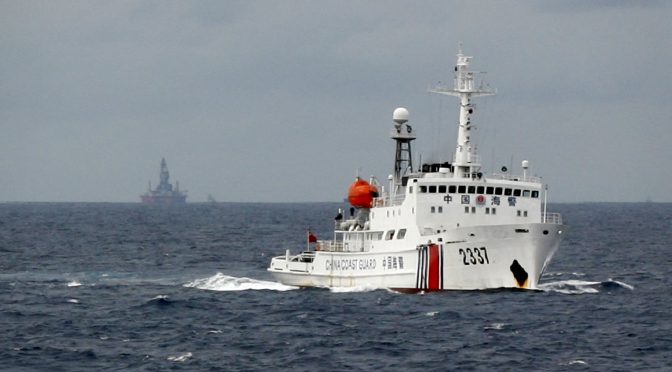
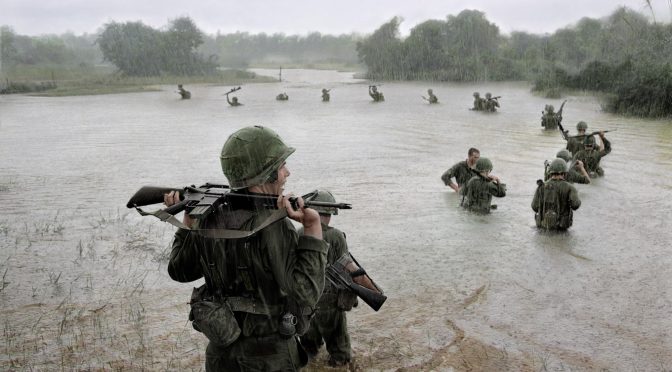

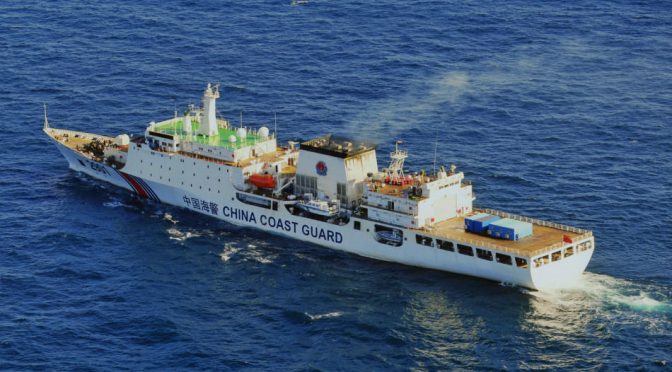
 influence of emerging naval platforms and technologies in the geostrategic contours of the Indo-Pacific region. It identifies relevant historical precedents, forming the basis for various maritime development and security related projects in the region.
influence of emerging naval platforms and technologies in the geostrategic contours of the Indo-Pacific region. It identifies relevant historical precedents, forming the basis for various maritime development and security related projects in the region.